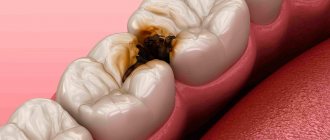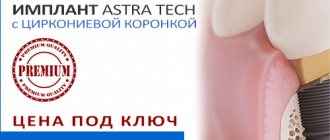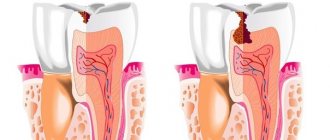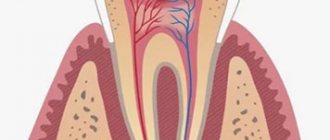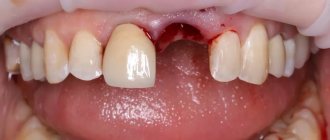The inflammatory process that occurs in the periodontal tissues that surround the tooth root is called periodontitis. Several causes of the disease can be identified:
- untreated caries
- untreated pulpitis
- injury received
- mistakes made in dental canal treatment
The most common causes of tooth root inflammation are problems associated with caries and pulpitis. In any case, treatment should be carried out in several stages. Left to chance, this dental disease can provoke serious general somatic problems, so it is necessary to approach the treatment of tooth root inflammation with all seriousness.
For what reasons can a tooth root become inflamed?
Despite the availability of many effective methods of therapeutic treatment of inflammation under the tooth root, it is often necessary to resort to the use of surgical treatment methods. This is indicated in the following cases:
- Root canal obstruction was detected
- there is a pin or stump tab that cannot be removed without damaging the root
- there are many cysts - perihilar or growing into the maxillary sinus
- there is a perforation (perforation) of the wall of the tooth root or its cavity
- The use of conservative methods of treating root inflammation does not help
Important:
Most often, periodontitis refers to inflammation in the area of the apex of the tooth root (apical, periapical periodontitis). The cause of tooth root inflammation is untimely treatment of caries and pulpitis. Another type of disease, marginal periodontitis, is classified as periodontology; in this case, the lesion spreads to the gums in the cervical part of the tooth.
Content
- How inflammation manifests itself
- What is the danger of tooth inflammation
- What can you do at home?
- What will they do at the hospital?
- Is it possible not to go to the dentist?
- Prevention
Tooth inflammation is an unpleasant and dangerous event that requires an immediate response. Inflammation can start for many reasons. There are always bacteria in the mouth. Under favorable conditions, they begin to multiply and can damage tissue. Based on sufficient hygiene and preventive actions, a small inflammation of the soft tissues can develop into a much more dangerous complication - inflammation of the tooth.
Symptoms and treatment
Periodontitis can be chronic and worsen. The characteristic symptoms that are revealed during examination by a dentist and as a result of anamnesis vary depending on the stage of development of the disease.
Exacerbation of periodontitis is characterized by the following signs and complaints from the patient:
- Regardless of the time of day, you are constantly haunted by a monotonous, equally intense, aching toothache.
- When pressing on the tooth, the pain intensifies
- There is a feeling that the tooth has “grown” - it interferes and does not allow the jaws to connect, since any attempt to do this ends in a painful attack
- The accumulation of purulent contents provokes pulsating pain, radiating along the branches of the trigeminal nerve
- Feeling worse, weakness appears, temperature rises
- Submandibular lymph nodes may become enlarged
Exacerbation may be accompanied by serous and purulent discharge. In case of purulent periodontitis, the doctor is first faced with the task of getting rid of pus: the tooth cavity is cleaned, the canals are treated.
Symptoms of tooth root inflammation in chronic form are not so pronounced:
- The tooth does not hurt constantly, but when pressing, unpleasant pain occurs
- A fistula may occur with frequently exacerbating granulating periodontitis. In this case, under the influence of exudate, the tissues “melt” and the exudate exits through a hole in the gum located in the area of the root apex. In the remission stage, such a formation looks like a changed area of the mucous membrane
- The presence of bad breath (halitosis) is also a sign of chronic apical periodontitis. Microorganisms that cause caries contribute to the destruction of hard tooth tissues, enter its internal cavity and provoke tissue death in the pulp, which leads to the accumulation of necrotic masses, which are the main factor of halitosis.
The chronic form of tooth root inflammation is treated conservatively in most cases; only in the most advanced cases is surgery prescribed. Modern standards of all medicine and dentistry in particular consider any disease comprehensively, that is, they do not treat fistulas, cysts or granulomas separately. In the treatment of tooth root inflammation, antibiotics, painkillers and other medications are used.
What if the roots are not affected by caries?
In dental practice, decisions about the need for root removal have to be made quite often. So, if a “living” healthy tooth splits due to injury, its roots are usually slightly damaged and can be saved. But the roots of a pulpless and treated tooth are, as a rule, removed so that they can be replaced with a titanium implant and a crown made of metal ceramics or zirconium dioxide can be installed on it. As a rule, destroyed rear molars, the most problematic in the dentition, are also removed along with the roots.
Quite often, even if there is a therapeutic option to preserve the root, real professionals still refuse it. They know from experience in which cases the crown will not be attached securely enough to the restored native root, and therefore will not be fully functional. Therefore, it is best to entrust the decision on the advisability of preserving roots to a highly qualified specialist.
Relieve pain before going to the doctor
For any form of periodontitis, it is necessary to make an appointment with a doctor, but often the aching tooth “does not want” to wait for the appointed time and hurts unbearably. Taking a pain reliever will help relieve the condition. For toothache, experts advise taking medications that are most optimal for such cases. The pill will not cure, but it will relieve the pain. This does not mean that you can postpone a visit to the doctor - after the pill wears off, the pain will return, so a trip to the dentist should not be postponed or put off “for later”.
Tooth extraction using remote control is a quick, but not the best solution to the problem
Until now, especially among patients in the older age group, there is an opinion that the easiest way is to quickly and inexpensively remove a problematic tooth , thus getting rid of acute toothache. At first glance, it seems that you can really save your own time and money. But after removal, the lost tooth will have to be replaced with an artificial analogue, resorting to implantation or dental prosthetics.
These procedures are quite expensive and will require multiple visits to the clinic. And by refusing them, the patient risks encountering a whole series of new problems caused by malocclusion. The teeth adjacent to the removed ones will shift to the vacant space, the bone will begin to dissolve, the tone of the facial muscles will decrease, and the face will begin to age much faster. That's why dentists recommend endodontic treatment.
Features of the treatment of periodontitis with fistula
The inflammatory process can occur with complications, one of them is odontogenic fistula. More often it occurs with granulating periodontitis. These are holes in the mucous membrane, formed as a result of the proliferation of granulations and destruction of the tissues surrounding the tooth. Through the resulting fistula, pus is released, which is formed during inflammation under the root of the tooth.
To some extent, the resulting fistula helps to reduce the pain experienced by a person: the purulent contents do not linger in the tissues, but come out, easing the course of the disease. But you should not delay the examination by the dentist and the appointment of treatment - this is fraught with tooth loss.
The fistula will not disappear on its own; it is necessary to remove the cause that caused it – inflammation in the periodontal tissues. The treatment regimen for root inflammation is standard in all cases:
- thorough mechanical cleaning of the canals
- carrying out disinfection
- temporary filling with a drug until inflammation in the periodontium disappears
In particularly advanced cases, overgrown granulations are surgically removed.
Oral diseases in which the roots become inflamed
Among the most common dental ailments that can destroy dental canals:
- Advanced caries, pulpitis. With a huge carious cavity, destruction and damage to bone structures can never be ruled out.
- Poor oral hygiene. If basic hygiene rules are violated, the gums become inflamed and the enamel becomes weak. This creates the preconditions for more serious problems.
- The presence of a granuloma or cyst at the base of the root. In the picture you can see a rounded neoplasm. There is liquid inside it. Therapy is carried out surgically. There is no other way to remove the cyst. As soon as the treatment is carried out, the inflammatory process in the remaining roots will subside.
- Poorly performed dental treatment. A filling that does not fit tightly to the walls, mediocre cleaning of the canals, cracks/fractures of the root - all these are factors that provoke inflammation.
- Recession of gingival tissues. With it, the neck of the tooth is exposed and ceases to be reliably protected. Then its sensitivity to the negative effects of bacteria increases.
With any of these diseases, there is an excellent chance of saving the tooth. The main thing is to start the fight for a healthy smile as early as possible.
Treatment methods
As already noted, in modern dentistry, preference is given to conservative treatment. However, it is often impossible to fully treat tooth root inflammation without surgical intervention.
Conservative treatment
This is a complex methodology that includes several types of activities:
- mechanical cleaning of channels
- disinfection of canals using medications
- Temporary filling with medication
Conservative therapy includes the prescription of antibiotics for inflammation of the tooth root.
Surgery
Involves the operation:
- removal of 1/3 of the root tip
- removal of part of the root (hemisection)
- removal of a tooth from the dental socket
Important: Doctors try to save teeth using all conservative treatment methods available today, since they are successful in 70-90% of cases.
Possible complications
Not all cases go smoothly. Let's consider the main problems that arise after the procedure.
- Perforation.
The phenomenon is the formation of holes between the dental canals and surrounding tissues. Treatment of perforation consists of medicinal treatment and filling. - Cheek swelling.
The reason why the cheek is swollen after root canal treatment is believed to be the impregnation of the periodontal tissues and mucous membranes with an anesthetic drug, which themselves are quite loose and easily absorb liquid. - Instrument fracture.
The probes for passing through the channels are very thin. If they break during medical procedures, the fragments are removed with special devices. Modern dental instruments made of nickel-titanium alloys are less susceptible to wear and break less often. - Adverse reactions to medications.
The range and severity of side effects of modern anesthetics are minimal. Before treatment, the doctor must collect an allergic history - information about drug intolerance - and the likelihood of a full-blown allergic reaction is practically reduced to zero. Adverse reactions of moderate and minor degrees are mostly short-term, can be easily corrected or can be overcome by changing the drug. - Other complications.
Situations such as swallowing particles of fillings, tooth dust, and small instruments now practically do not occur thanks to the use of a rubber dam - a latex plate that separates the tooth or teeth being treated from the oral cavity.
Stages of periodontitis treatment
How many times you will have to come to the doctor to treat inflammation at the root of the tooth depends directly on the form of the disease, in remission or during an exacerbation. The course of treatment is also influenced by the method chosen by the doctor. Often, therapy requires a course consisting of several stages of treatment and a visit to the dentist. Until the inflammatory process is eliminated, the tooth cannot be filled, so you will have to visit your doctor several times:
- Preparatory stage. Diagnosis of the condition of the tooth root using x-rays
- When removing the old filling, the tooth is drilled to open access to the canals and remove the nerve
- Channels are expanded to the required size
- Treating the canals with antiseptic drugs and applying medication
- A temporary filling is installed
- At the next visit, the temporary filling is removed and the canals are treated with antiseptic. This stage can last for weeks, or even months - the process will be repeated until the inflammatory focus is completely eliminated and the number of visits will depend on this
- A permanent filling is placed and x-rays are taken again for control.
In addition to the procedures performed in the clinic, the patient must undergo antibacterial and anti-inflammatory therapy. At home, he should do warm rinses with special antiseptic solutions (herbal, medicinal - as recommended by a doctor).
What is dangerous about severe inflammation of tooth tissue?
If measures are not taken in time, the inflammatory process can lead to:
- to the formation of granulomas, cysts, abscesses;
- pulp death;
- loosening of teeth;
- removal or loss of teeth;
- spread of infection to the jaw bone (flux);
- development of general diseases, including myocardial infarction.
It is very important to start treating tooth inflammation on time, and even better, to prevent it. Many clinics provide services for the treatment of dental inflammation. It is worth choosing one that has gained a lot of experience, has its own diagnostic base, and provides guarantees for the doctor’s work.
Prevention
- Preventing any disease is easier than treating it afterwards. This is a true statement, so regular dental checkups should become a good habit. If you live in St. Petersburg, Krasnodar, Novorossiysk or Moscow, then you can contact any of the branches of the INTAN dental network for the best qualified help
- Also, timely treatment of caries and pulpitis will help to avoid periodontitis and its attendant complications. The cost of treating them will be higher and more time will be required.
- In case of acute inflammation at the root of the tooth, a quick visit to the doctor and timely treatment will relieve complications and prevent the process from becoming chronic.
- If caries is detected at any stage, you need to make an appointment with a doctor as soon as possible, undergo an examination and prescribed treatment (remove damaged tooth tissue, filling)
- Compliance with hygiene rules (brush your teeth twice a day with a properly selected brush and toothpaste, use dental floss)
- Diet is important. Dairy products and protein-rich foods, fresh vegetables and fruits should always be on the table. Minimize the consumption of sugar-containing foods and sweet carbonated water.
- Visit your doctor every six months for a check-up and professional teeth cleaning
Following simple rules for oral care will help you avoid inflammation of the tooth root and all the troubles associated with it.
What causes root canal inflammation?
When pain appears, it indicates the need for treatment. Otherwise, the infection from the focus of purulent inflammation can spread to the entire circulatory system, causing:
- atrophy of the jaw bone tissue;
- gangrenous bone lesions;
- tissue necrosis in the inflamed area;
- the occurrence of cardiovascular diseases;
- and in the most severe case, with weakened immunity, blood poisoning and even death.
The problem is that pulp inflammation is not always accompanied by pain symptoms. Therefore, it is so important to visit your dentist regularly, as well as inform him about all changes in your health status and about newly diagnosed diseases of systems and organs.





